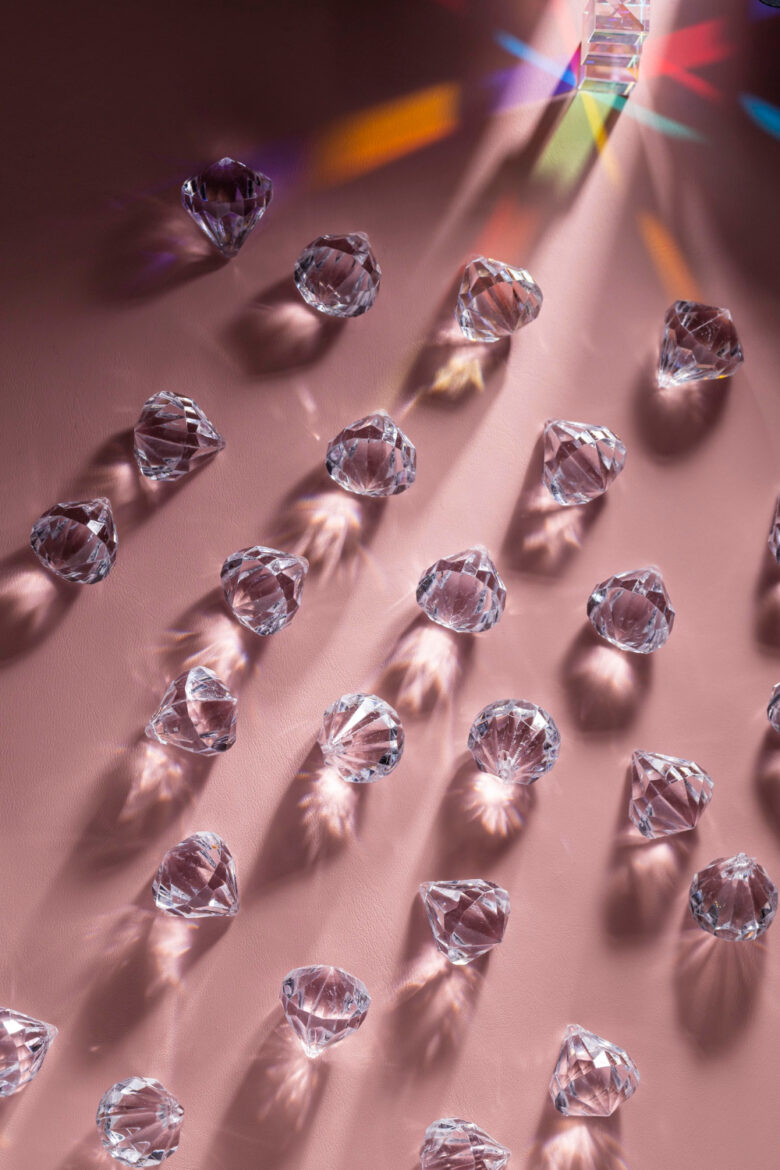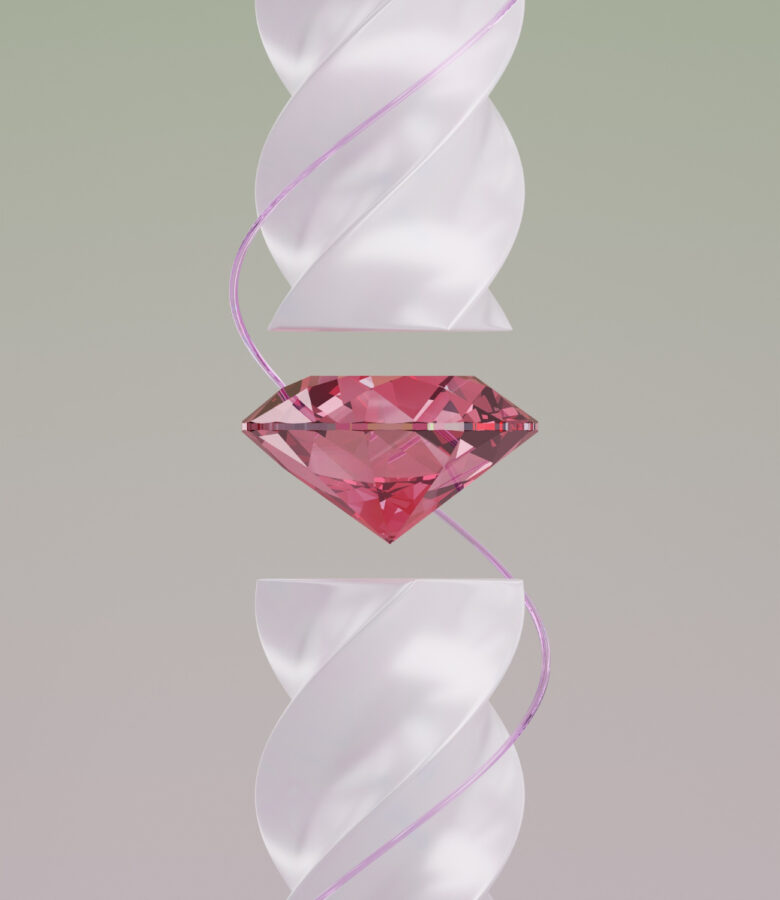In the realm of luxury and adornment, diamonds have long been revered as symbols of wealth, beauty, and eternal love. Their allure is undeniable, captivating hearts and minds for centuries. However, the traditional diamond industry, with its reliance on mining, has come under increasing scrutiny due to environmental concerns, ethical issues, and the high costs associated with extraction. In response to these challenges, a new player has emerged on the scene: laboratory-grown diamonds. These gems, created through advanced scientific processes, offer a sustainable, ethical, and economically viable alternative to their mined counterparts. In this comprehensive exploration, we delve into the fascinating world of laboratory diamonds, uncovering their origins, advantages, and impact on the jewelry industry.

Source: freepik.com
Contents
Origins and Production Process
Laboratory diamonds, also known as cultured or synthetic diamonds, are crafted using cutting-edge technology that replicates the natural conditions under which diamonds form deep within the Earth’s mantle. The process typically involves two main methods: High Pressure High Temperature (HPHT) and Chemical Vapor Deposition (CVD).
In the HPHT method, a small diamond seed is placed in a chamber where it is subjected to extreme heat and pressure, mimicking the conditions found beneath the Earth’s surface. Carbon atoms are then deposited onto the seed, gradually building up layers until a diamond crystal is formed. This process can take several weeks to months, depending on the desired size and quality of the diamond.
Alternatively, in the CVD method, a thin slice of diamond seed material is placed in a chamber filled with a carbon-rich gas, such as methane. Under conditions of low pressure and high temperature, the gas is ionized, causing the carbon atoms to bond and form a crystalline structure on the seed. This method allows for greater control over the growth process and can produce larger, higher-quality diamonds in a shorter timeframe.
Advantages of Laboratory Diamonds
- Ethical Sourcing: One of the primary advantages of laboratory diamonds is their ethical pedigree. Unlike mined diamonds, which are often associated with human rights abuses and environmental degradation, laboratory diamonds are produced in controlled environments without the need for mining or exploitation of labor. This makes them a more socially responsible choice for consumers who are concerned about the origins of their jewelry.
- Environmental Sustainability: The environmental impact of diamond mining is well-documented, with significant land disruption, habitat destruction, and water pollution associated with traditional mining operations. Laboratory diamonds, on the other hand, have a much lower environmental footprint, requiring significantly less energy and water to produce. Additionally, they do not contribute to deforestation or soil erosion, making them a more sustainable option for environmentally conscious consumers.
- Cost-Effectiveness: While laboratory diamonds were once considered a niche product with limited availability, advances in technology have made them increasingly affordable and accessible to consumers. In recent years, the cost of laboratory diamonds has declined significantly, making them a viable alternative to mined diamonds for budget-conscious shoppers. This has opened up new opportunities for consumers to enjoy the beauty and luxury of diamonds without breaking the bank.
- Quality and Purity: Contrary to common misconceptions, laboratory diamonds are virtually indistinguishable from their mined counterparts in terms of quality, brilliance, and durability. In fact, many laboratory diamonds exhibit higher levels of purity and clarity than natural diamonds, thanks to the controlled conditions under which they are grown. This ensures that consumers can enjoy a flawless, high-quality diamond without compromising on beauty or elegance.
- Customization and Innovation: Another advantage of laboratory diamonds is their versatility and adaptability in jewelry design. Because they are grown in controlled environments, laboratory diamonds can be produced in a wide range of shapes, sizes, and colors to suit the preferences of individual consumers. This opens up a world of creative possibilities for designers and jewelers, allowing them to create unique and personalized pieces that are truly one-of-a-kind.

Source: freepik.com
Impact on the Jewelry Industry
The rise of laboratory diamonds has had a profound impact on the traditional jewelry industry, disrupting long-established norms and challenging the dominance of mined diamonds. As consumers become increasingly aware of the ethical and environmental issues associated with diamond mining, there has been a growing demand for more sustainable and socially responsible alternatives. Laboratory diamonds have emerged as a compelling solution to this demand, offering all the beauty and prestige of natural diamonds with none of the ethical baggage.
One of the key drivers of this shift has been the changing attitudes of younger consumers, who are more socially and environmentally conscious than previous generations. Millennials and Gen Z, in particular, are driving demand for sustainable and ethical products across all industries, including jewelry. As this demographic comes of age and begins to enter the market for luxury goods, their preferences and values are shaping the future of the industry, driving demand for laboratory diamonds and other responsibly sourced gems.
In response to this shifting landscape, many traditional jewelry retailers and manufacturers have begun to incorporate laboratory diamonds into their product offerings, recognizing the growing demand for ethical and sustainable alternatives. Some have even gone so far as to rebrand themselves as “ethical jewelers,” pledging to only sell diamonds that have been ethically sourced and sustainably produced. This marks a significant departure from the industry’s long-standing focus on luxury and exclusivity, signaling a broader shift towards transparency, accountability, and social responsibility.
Challenges and Future Outlook
While laboratory diamonds offer many advantages over their mined counterparts, they are not without their challenges. One of the main obstacles facing the industry is consumer perception and awareness. Despite the growing popularity of laboratory diamonds, many consumers still harbor misconceptions about their quality, value, and legitimacy. Some mistakenly believe that laboratory diamonds are “fake” or inferior to natural diamonds, while others remain unaware of the ethical and environmental benefits of choosing laboratory-grown gems.
To overcome these challenges, industry stakeholders must work together to educate consumers about the benefits of laboratory diamonds and dispel common myths and misconceptions. This will require concerted efforts from jewelers, manufacturers, and advocacy groups to raise awareness and promote the ethical and environmental credentials of laboratory diamonds. By highlighting their sustainability, purity, and affordability, industry stakeholders can help to position laboratory diamonds as the ethical choice for conscientious consumers.

Source: freepik.com
Looking ahead, the future of laboratory diamonds looks promising, with continued advancements in technology driving down costs and expanding the range of available options. As consumer awareness and demand continue to grow, laboratory diamonds are poised to become an increasingly mainstream choice for jewelry shoppers around the world. With their ethical pedigree, environmental sustainability, and unrivaled beauty, laboratory diamonds represent not only a revolution in the jewelry industry but also a shining example of innovation and progress in the pursuit of a more sustainable and equitable future.
